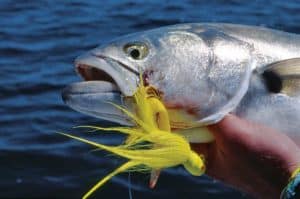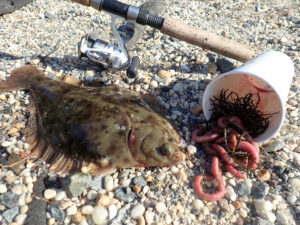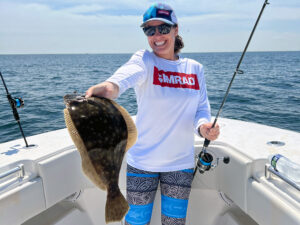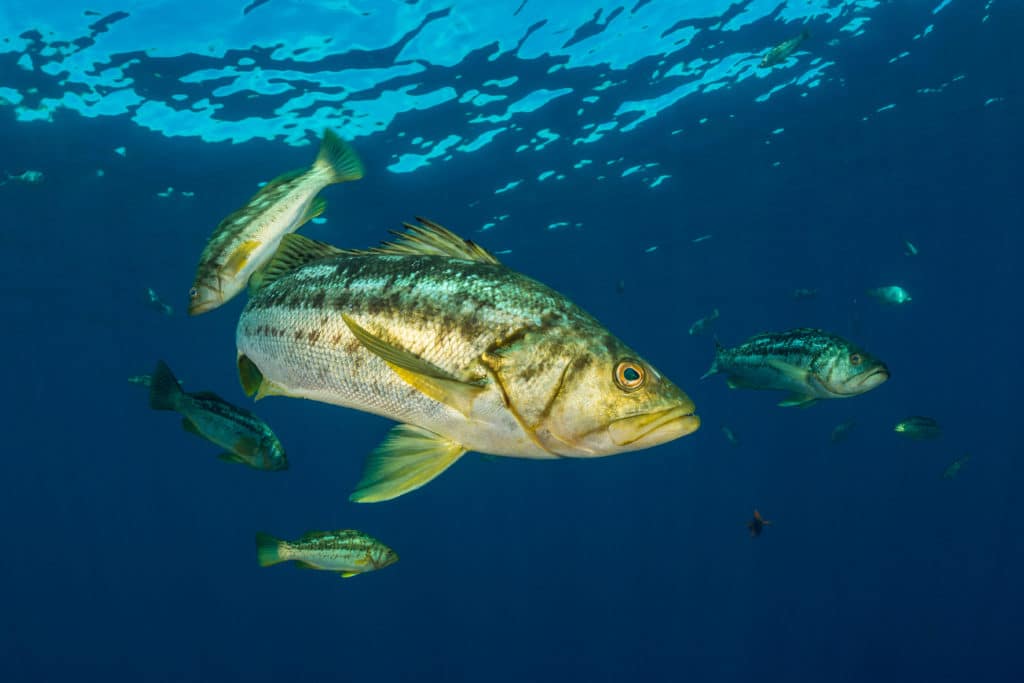
Cooling ocean temperatures, chilly weather and the closure of bottom fishing for many species in January and February discourage a fair number of Southern California saltwater anglers from fishing in winter. Yet to those in the know, winter time translates to prime time for big calico bass.
Big calico bass tend to adopt different habitats and feeding patterns in December, January, February and early March. These structure-loving fish often move to deeper reefs, and so catching this species—also known as kelp bass—requires a change in thinking, as well as tackle and tactics. The methods prove dramatically different from those employed when fishing amid shallower kelp beds and reefs in warmer months.
Yet, when it all comes together, catching hard-fighting winter calicos in the 4- to 8-pound range heats up an otherwise cold day.
Deep Structure Fishing for Calico Bass
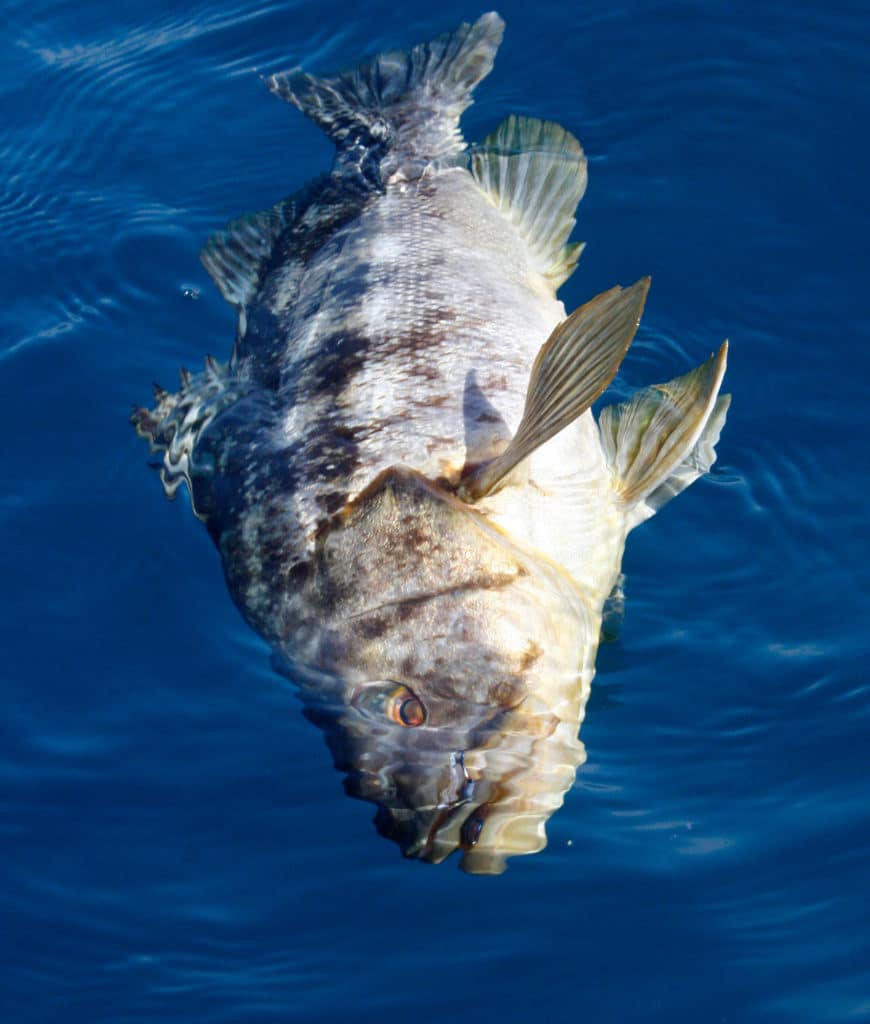
For winter calico bass, I focus on reefs in 90 to 175 feet of water, some of which sprout deep bull kelp that this species loves to inhabit. I have found particularly productive reefs along the coasts of northern Los Angeles County and Ventura County, as well as the waters surrounding Santa Catalina Island. But deep reefs along other coastal areas and islands can also kick out big fish.
One secret to finding the reefs lies in looking for lobster-pot buoys. Commercial fishermen place their traps around structure to catch the California spiny lobster, so when you see the buoys in deep water, use your fishfinder to locate the reef. The broader the reef, the better the chance of finding bass. Where, you find one calico, you often more: Bigger bass revert to schooling behavior after migrating to deeper water.
Moving water triggers calico bass, especially those inhabiting deep reefs. In Southern California, the water movement usually occurs on the tide change. Some of the best tides for winter calico fishing occur around the new and full moons. When currents sweep over deep reefs, calico bass tend to ascend and suspend well above the bottom. Many times, I find schools of bass suspended on the upcurrent edges of the reefs, staging to intercept forage as it’s ushered in by the moving water. Use your fishfinder to mark the schools. Take note of locations and depths of the fish, and focus your fishing efforts in these areas.
Jig-Squid Combo fo Calico Bass
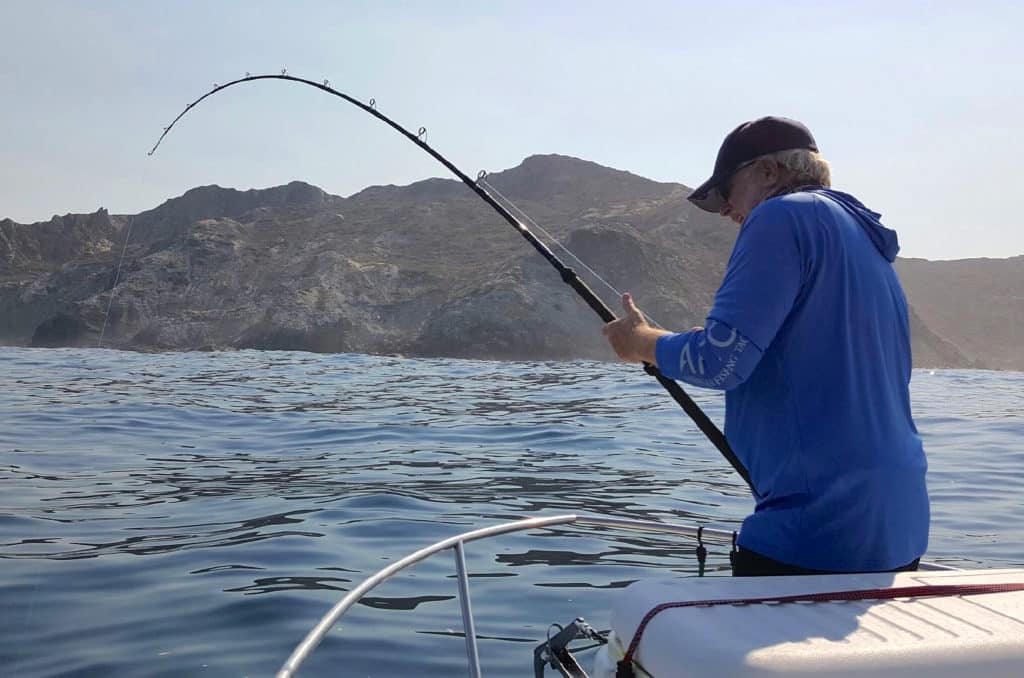
Due to the water depth and rocky bottom of reef systems, I refrain from using a conventional anchor. However, a bow-mounted saltwater trolling motor with GPS guidance and virtual-anchor features can help immensely in maintaining position over structure and schools of fish.
Drift fishing can also generate results, as long as the wind or current is not too strong. Motor to the upwind and/or upcurrent side of the reef, then pull the boat into neutral to put your crew on a productive drift.
A metal jig with an opalescent (aka market) squid—either live, fresh dead or defrosted from a batch of frozen squid—pinned to the hook serves as one of the most productive lures for winter calicos on deep reefs. The 2-ounce Promar Ahi Assault diamond jig with a single 3/0 hook is one of my favorites, especially in the Baby Red color. Another great metal jig to use—particularly with a quick drift—is the 3.6-ounce Tady 9 heavy in the Scrambled Egg pattern, rigged with a single 3/0 Siwash hook.
A Bite on the Drop Down
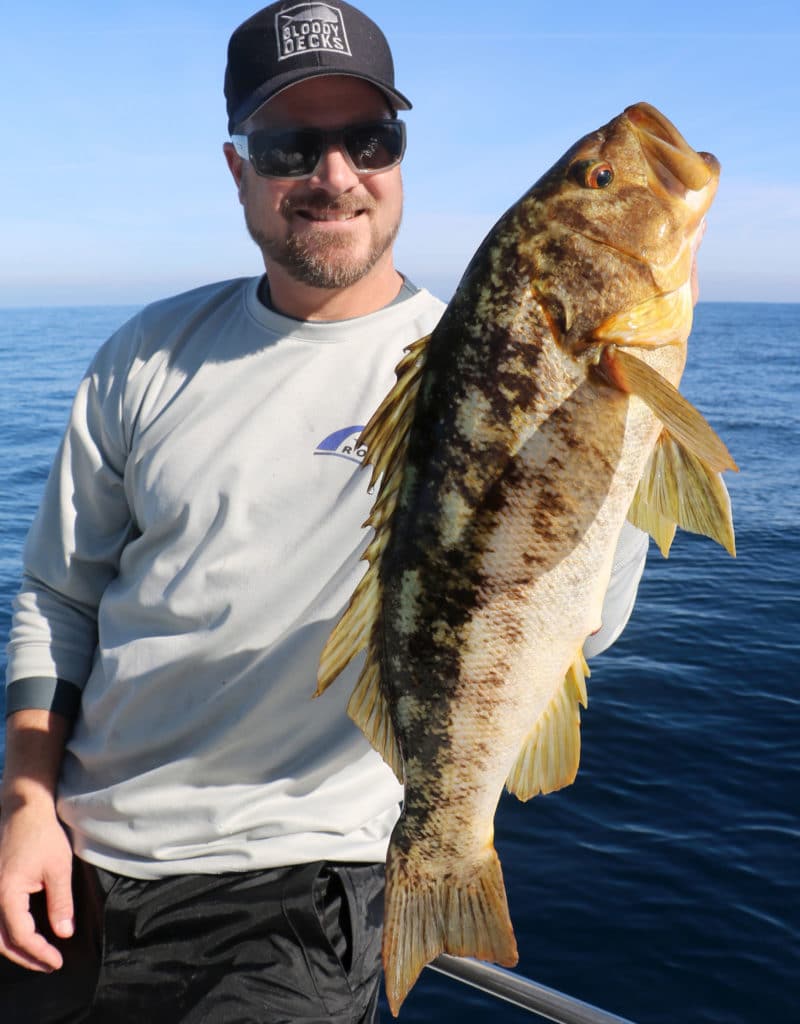
I thread the hook once through the tip of the mantle of a squid, and then drop it straight down to entice a big calico to bite. You also can cast the jig-squid combo, but straight drops tend to keep the line vertical, which helps you better sense a bite.
Winter calico bass typically attack the jig-squid combo as it flutters down through the water column. Many times, the lure simply stops descending short of the bottom, an indication that a suspended fish has slurped it down. Other times, a calico might inhale the offering and race away at top speed as line peels off the reel. In either case, put the reel in gear, quickly gather any slack in the line and, once tight, set the hook.
If the lure reaches the bottom without a bite, reel the jig-squid combo back upward at a steady slow to medium pace to entice a calico to bite on the ascent. Calico bass seem to attack with greater aggression as the jig/squid combo rises, so be ready to set the hook as soon as the fish strikes.
Calico Bass Tackle Choices
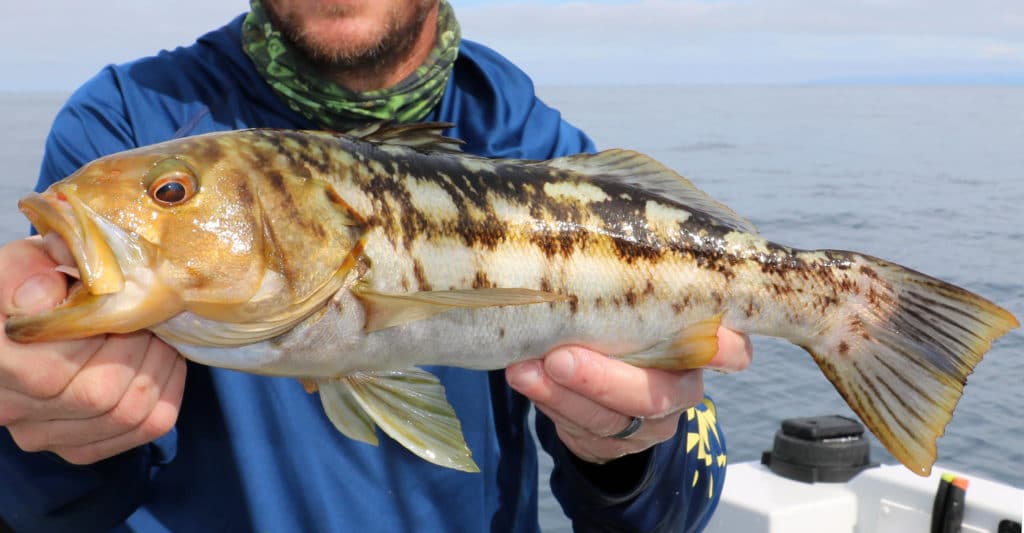
SoCal anglers increasingly choose large low-profile saltwater baitcasting reels such as the Daiwa Lexa 400, Okuma Komodo 450, Penn Fathom 300 or Shimano Tranx 400 for calico bass. They work exceedingly well for wintertime bass fishing, thanks to their level-wind capability and push-bar freespool for easy operation, powerful and smooth star-drag systems for stopping big calicos, and high-speed retrieve ratios for gathering line quickly when bit on the sink. I like to spool up with 50-pound-test braid and a 10-foot top-shot of 30-pound-test fluorocarbon.
A lightweight 7- to 8-foot medium-action graphite rod such as the G. Loomis IMX-Pro Blue series 504C-MF 7½-foot stick provides sensitivity for feeling subtle strikes, reduces fatigue during a full winter day of fishing, and provides the backbone to battle big bass in deep water.
If you’re a SoCal angler, think about heading out to deep reefs at this time of year for a day of targeting big calico bass with a jig-squid combo rig. Who knows? It might be just what the doctor ordered for that case of the winter blues.

